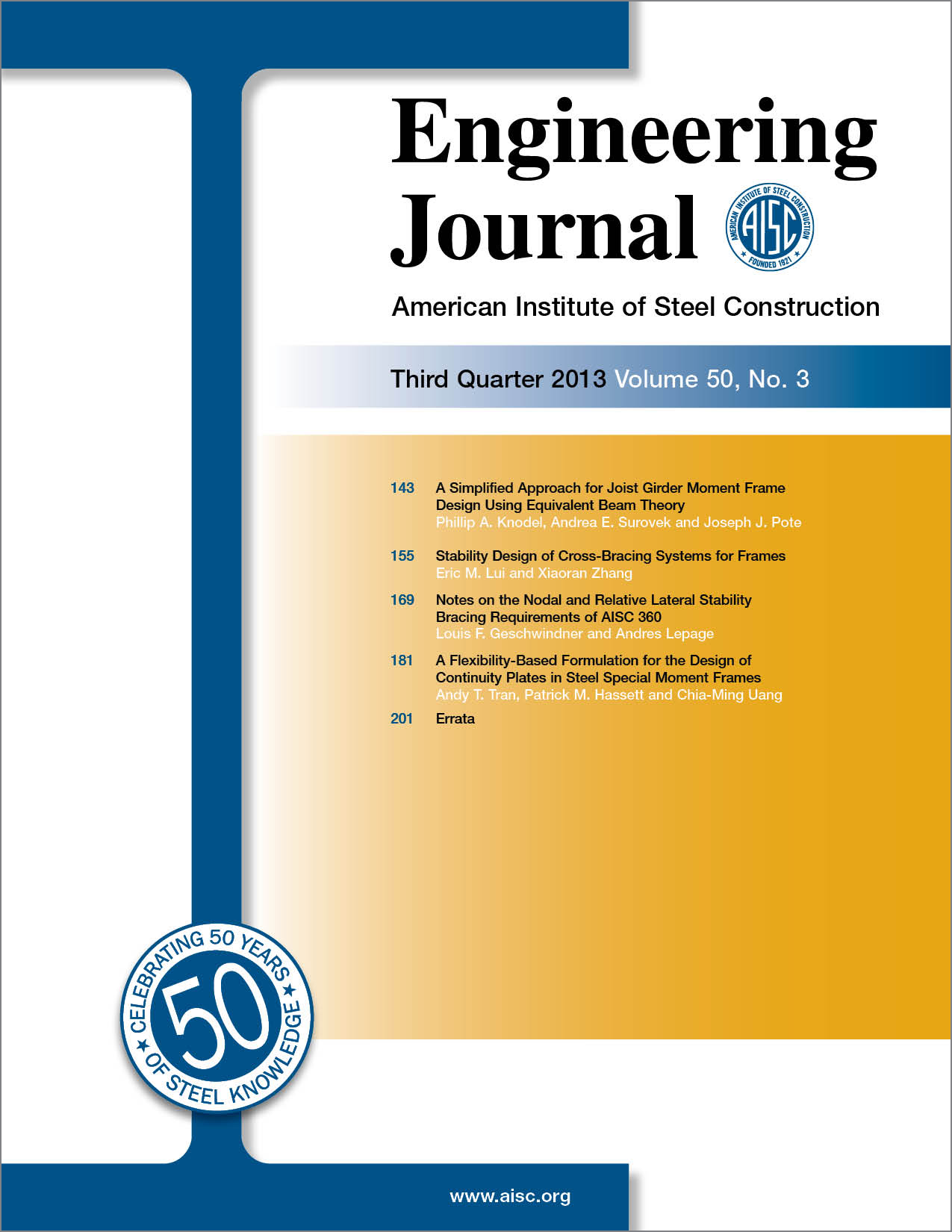A Simplified Approach for Joist Girder Moment Frame Design Using Equivalent Beam Theory
DOI:
https://doi.org/10.62913/engj.v50i3.1048Keywords:
joist girder, beam theory, steel joist designAbstract
The design of building structures has become a highly automated, computer-based process in which designers depend on the capabilities of commercial software for member strength checks and determination of deflections, drifts and member weights. Most commercial structural design software packages allow the user to build custom beam tables. The use of custom beam tables for joist girders requires the application of equivalent beam theory (EBT). Using EBT, section properties are determined in such a way that joist girder limit states are appropriately captured by strength checks employed by the software. By building custom beam tables, representing approximations of joist girders based on typical available chord sizes and typical ratios of weights, appropriate joist girder section properties can be estimated from almost any commercial structural software program. This paper presents the methodology for developing approximate section properties for steel joist girders that allow commercial software results to closely compare to joist manufacturer's designs.

